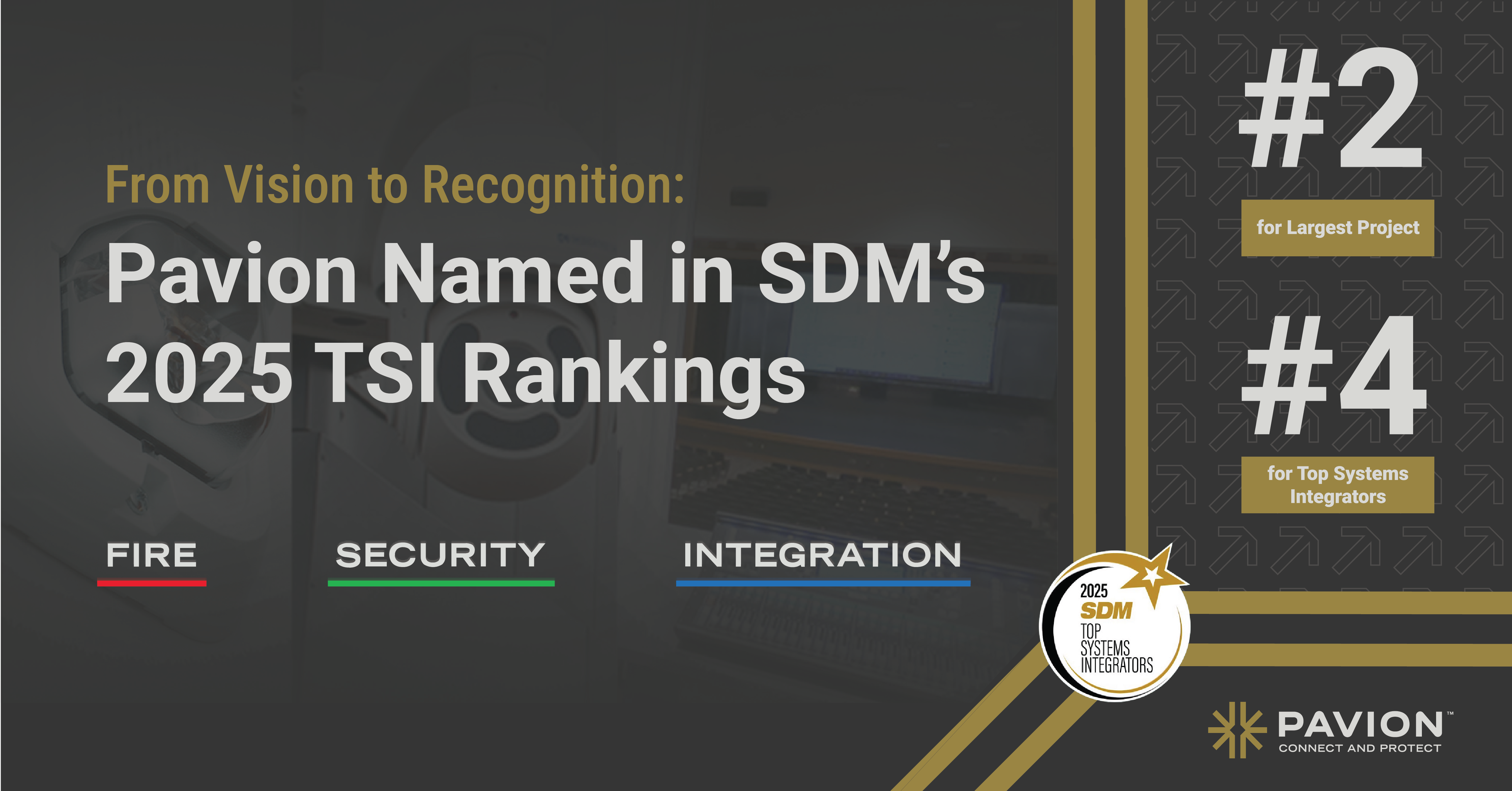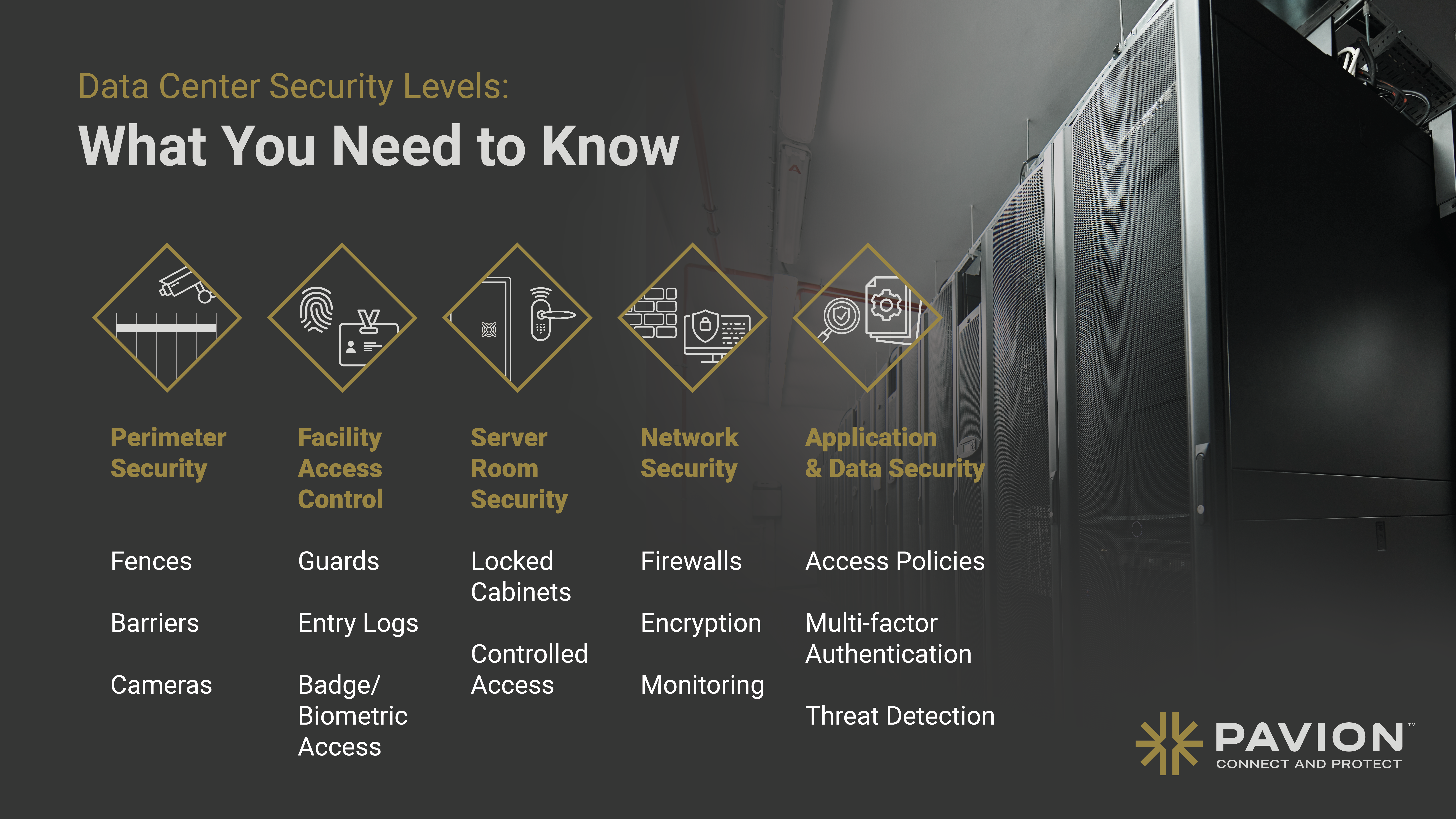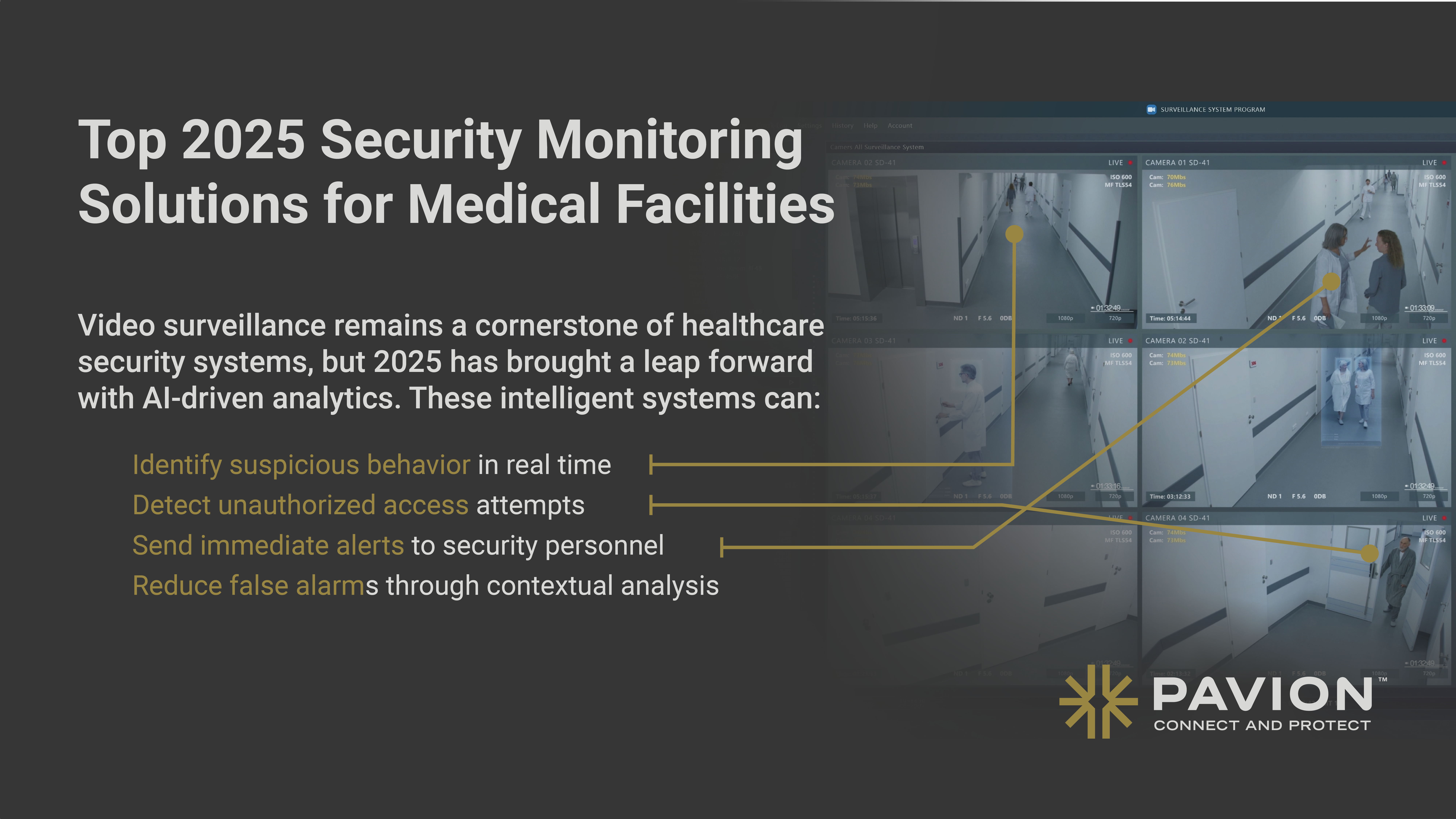
What is AV System Integration
In today’s digital age, AV system integration plays a crucial role in enhancing communication and collaboration in various industries. This article aims to provide a comprehensive understanding of AV system integration, including its definition, key components, process, benefits, future trends, and how to choose the right provider.
Understanding the Basics of AV System Integration
Definition and Importance of AV System Integration
AV system integration refers to the seamless combination of audiovisual equipment, control systems, and network infrastructure to create a unified and user-friendly environment. It involves connecting multiple devices, such as projectors, displays, audio systems, and video conferencing tools, to ensure optimal performance and usability.
The importance of AV system integration cannot be overstated. It enables organizations to leverage the power of technology to enhance communication, collaboration, and productivity. Whether it’s a boardroom, classroom, or entertainment venue, a well-integrated AV system can create immersive experiences and streamline operations.
Key Components of an AV System
An AV system comprises several key components that work together to deliver a seamless audiovisual experience:
- Displays: High-resolution screens, projectors, or video walls
- Audio Systems: Speakers, microphones, amplifiers, and mixing consoles
- Control Systems: User interfaces, touch panels, and remote control devices
- Signal Processing: Switchers, scalers, and audio/video processors
- Networking: Infrastructure for data transmission and device control
- Integration Software: Programming tools and platforms for system configuration and control
By integrating these components, AV system integration professionals can create a cohesive and user-friendly environment tailored to the specific needs of an organization.
Displays play a crucial role in AV system integration. High-resolution screens, projectors, or video walls are used to convey visual information and create immersive experiences. These displays are carefully selected based on factors such as viewing distance, ambient lighting conditions, and content requirements. For example, in a large auditorium, a video wall consisting of multiple displays may be used to ensure visibility from every seat.
Audio systems are another essential component of AV system integration. Speakers, microphones, amplifiers, and mixing consoles are used to deliver high-quality sound and ensure clear communication. The placement of speakers is carefully planned to achieve optimal coverage and minimize audio reflections. Microphones are strategically positioned to capture audio from presenters or participants, while amplifiers and mixing consoles are used to control and enhance the audio signal.
Control systems are the backbone of AV system integration. User interfaces, touch panels, and remote control devices allow users to operate and manage the AV system effortlessly. These control systems provide a centralized platform for controlling various devices, adjusting audiovisual settings, and managing content. With intuitive interfaces and user-friendly controls, even non-technical users can easily navigate and operate the AV system.
Signal processing is a critical aspect of AV system integration. Switchers, scalers, and audio/video processors are used to route, convert, and enhance audiovisual signals. Switchers allow users to select and switch between different audiovisual sources, while scalers ensure that the content is displayed at the appropriate resolution. Audio/video processors optimize the audio and video signals, adjusting parameters such as volume, color, and contrast to deliver the best possible quality.
Networking is an integral part of AV system integration. It provides the infrastructure for data transmission and device control, enabling seamless communication between different components of the AV system. Through a robust network, audiovisual content can be shared, controlled, and distributed across multiple devices and locations. Networking also allows for remote monitoring and management of the AV system, ensuring efficient troubleshooting and maintenance.
Integration software plays a crucial role in configuring and controlling the AV system. Programming tools and platforms are used to design and customize the functionality of the AV system. Integration software allows professionals to create automated workflows, schedule events, and define user permissions. It also enables integration with other systems, such as room scheduling software or video conferencing platforms, to enhance the overall functionality and interoperability of the AV system.
The Process of AV System Integration
The process of AV system integration involves several key steps that ensure the successful implementation of an audiovisual system. From initial planning and design to testing and troubleshooting, each stage is crucial in delivering a fully functional and reliable AV system that meets the client’s expectations.
Initial Planning and Design
The first step in AV system integration is understanding the requirements, objectives, and constraints of the project. This involves collaborating with stakeholders to identify the desired functionality, budget, and timeline. An experienced AV integrator will then develop a comprehensive design plan, considering factors such as room acoustics, lighting, and user interface design.
During the planning and design phase, the AV integrator also takes into account the specific needs of the client. This includes evaluating the size and layout of the space where the AV system will be installed, as well as any unique considerations, such as the need for multi-room integration or specialized equipment.
The planning and design phase also involves selecting the most appropriate audiovisual equipment and infrastructure to meet the client’s needs. This includes evaluating the compatibility of different devices and ensuring scalability for future upgrades or additions. The AV integrator will carefully consider factors such as display resolution, audio quality, and control system capabilities to create a system that maximizes performance and functionality.
Installation and Configuration
Once the planning and design phase is completed, the next step is the physical installation of the AV system. This involves mounting displays, installing speakers, running cables, and connecting equipment. An experienced AV integration team ensures proper cable management, adherence to safety standards, and minimal disruption to the client’s operations.
The configuration of the AV system is another essential aspect of the installation process. This includes programming the control systems, setting up network connectivity, and fine-tuning audio and video parameters. Thorough testing is conducted to verify the functionality and interoperability of all components.
During the installation and configuration phase, the AV integrator works closely with other trades, such as electricians and carpenters, to ensure seamless integration of the AV system into the existing infrastructure. This may involve coordinating schedules, communicating technical requirements, and addressing any unforeseen challenges that arise during the installation process.
Testing and Troubleshooting
Testing and troubleshooting are critical stages in the AV system integration process. Rigorous testing ensures that all audio, video, and control functions are working as intended. Compatibility issues, system latency, and audiovisual synchronization are thoroughly evaluated and addressed.
The AV integrator conducts extensive testing to ensure that the AV system meets the client’s expectations in terms of performance, reliability, and ease of use. This may involve simulating real-world scenarios, such as different lighting conditions or audio sources, to assess the system’s capabilities and identify any potential limitations.
In case of any issues or malfunctions, the AV integration team performs troubleshooting procedures to identify and resolve the problems. This may involve software updates, calibration, or replacement of faulty components. The goal is to deliver a fully functional and reliable AV system that meets the client’s expectations.
Throughout the entire AV system integration process, effective communication and collaboration between the AV integrator and the client are essential. Regular progress updates, feedback sessions, and training on system operation ensure that the client is involved and informed at every stage, resulting in a successful AV system integration that meets their specific needs and requirements.
Benefits of AV System Integration
AV system integration is a powerful tool that offers numerous benefits to organizations. By seamlessly integrating audiovisual systems, businesses can enhance communication, improve efficiency, and achieve cost savings. Let’s explore some of the key advantages in more detail.
Enhanced Communication and Collaboration
One of the primary advantages of AV system integration is the facilitation of effective communication and collaboration. With intuitive and feature-rich interfaces, users can easily interact and share content during video conferences, presentations, and collaborative workspaces. This seamless interaction fosters better understanding and collaboration among team members, regardless of their physical location.
Furthermore, advanced features such as document annotation, remote collaboration, and multi-site conferencing take communication and collaboration to the next level. These features enable organizations to connect globally, breaking down geographical barriers and promoting efficient teamwork.
Improved Efficiency and Productivity
AV system integration plays a crucial role in streamlining operations and boosting productivity. By automating routine tasks and providing centralized control, organizations can eliminate manual efforts and minimize downtime. For instance, a well-integrated conferencing system with automation simplifies the process of joining meetings, adjusting audio levels, and sharing content. This automation saves valuable time and allows employees to focus on more important tasks.
In addition, integrated AV systems effectively manage and distribute digital signage content. This capability enables businesses to communicate important messages in real-time and capture the attention of their target audience. Whether it’s displaying promotional content in retail stores or broadcasting critical information in corporate environments, AV system integration ensures efficient content management and delivery.
Cost-Effective Solution for Businesses
While the initial investment in AV system integration may seem significant, it offers long-term cost savings for businesses. By consolidating multiple standalone systems into one integrated solution, organizations can reduce maintenance, training, and equipment costs. This consolidation eliminates the need for separate maintenance contracts, simplifies training processes, and minimizes the number of equipment required.
Moreover, centralized monitoring and proactive maintenance ensure optimized performance, reducing the likelihood of system failures and minimizing costly downtime. With AV system integration, businesses can easily monitor the health and performance of their audiovisual systems, allowing them to take proactive measures before any issues arise. This proactive approach saves both time and money in the long run.
Furthermore, the scalability and flexibility offered by AV system integration enable businesses to adapt to evolving technology requirements without significant additional investments. As technology advances, organizations can easily upgrade or expand their integrated systems, ensuring they stay at the forefront of audiovisual capabilities without incurring substantial costs.
In conclusion, AV system integration brings a wide range of benefits to organizations. From enhanced communication and collaboration to improved efficiency and cost savings, businesses can leverage this technology to gain a competitive edge in today’s fast-paced world.
Future Trends in AV System Integration
Integration with Emerging Technologies
AV system integration is continuously evolving to incorporate emerging technologies. The integration of virtual reality (VR), augmented reality (AR), and artificial intelligence (AI) is expected to redefine the possibilities of audiovisual experiences. From immersive training simulations to interactive digital signage, the integration of these technologies will enhance engagement and create unique user experiences.
Virtual reality (VR) is revolutionizing the way we experience audiovisual content. With VR headsets becoming more accessible and affordable, AV system integration professionals are exploring new ways to incorporate this technology into various industries. For example, in the field of education, VR can transport students to historical events or distant locations, providing a truly immersive learning experience.
Augmented reality (AR) is another emerging technology that is transforming AV system integration. By overlaying digital information onto the real world, AR enhances our perception of reality and creates interactive experiences. In the retail industry, AR can be used to allow customers to virtually try on clothing or visualize how furniture would look in their homes, revolutionizing the shopping experience.
Artificial intelligence (AI) is also playing a significant role in AV system integration. AI-powered voice assistants, such as Amazon’s Alexa or Google Assistant, are becoming increasingly common in homes and businesses. These voice assistants can control audiovisual systems, providing a seamless and intuitive user experience. Additionally, AI algorithms can analyze user behavior and preferences to personalize audiovisual content, further enhancing engagement.
Sustainability in AV System Integration
The AV industry is also moving towards sustainability and environmental responsibility. AV system integration professionals are increasingly considering energy-efficient devices, recycling options, and environmentally conscious practices during the design and implementation stages. This commitment to sustainability contributes to reducing the carbon footprint and preserving our planet.
Energy-efficient devices are becoming a priority in AV system integration. LED displays, for example, consume less energy compared to traditional LCD displays, resulting in lower electricity consumption and reduced greenhouse gas emissions. AV system integration professionals are also exploring renewable energy sources, such as solar power, to power audiovisual systems, further reducing their environmental impact.
Recycling options for AV equipment are also being prioritized. As technology advances and AV systems are upgraded, there is a need for proper disposal and recycling of outdated equipment. AV system integration professionals are working closely with recycling organizations to ensure that electronic waste is handled responsibly, minimizing the negative impact on the environment.
Furthermore, environmentally conscious practices are being implemented throughout the AV system integration process. This includes using sustainable materials for construction, such as recycled plastics or responsibly sourced wood, and reducing waste through efficient project planning and management. By adopting these practices, AV system integration professionals are not only reducing their ecological footprint but also setting an example for other industries to follow.
Choosing the Right AV System Integration Provider
When it comes to selecting an AV system integration provider, there are several factors that you should take into consideration. These factors will help you make an informed decision and choose the right provider for your needs.
Factors to Consider
One of the most important factors to consider is the experience and expertise of the provider. It is crucial to look for a provider with a proven track record and extensive experience in AV system integration. This will give you the confidence that they have the knowledge and skills to handle your project effectively.
Another factor to consider is the provider’s portfolio and references. Take the time to review their past projects and seek references from their clients. This will give you a better understanding of the quality of their work and their ability to deliver on their promises.
Technical competence is also an important factor to consider. Ensure that the provider has certified technicians and a thorough understanding of the latest AV technologies. This will ensure that they can provide you with the most up-to-date solutions and recommendations.
Customer support and service should also be evaluated. It is important to assess the level of customer support and after-sales service offered by the provider. This will ensure that you have the necessary support and assistance throughout the lifespan of your AV system.
Scalability and future-proofing are also factors to consider. You should consider the provider’s ability to accommodate future system expansions or upgrades. This will ensure that your AV system can grow and adapt to your changing needs.
Budget and cost transparency should not be overlooked. Request a detailed cost breakdown from the provider and ensure that there are no hidden expenses. This will help you make an accurate assessment of the overall cost of the project.
Questions to Ask Potential Providers
When engaging with potential AV system integration providers, it is important to ask the right questions. Here are some questions that you should consider asking:
- How do you ensure compatibility and integration between different AV devices?
- What kind of warranty and support options do you offer?
- Can you provide examples of projects similar to ours that you have successfully completed?
- How do you stay updated with the latest AV technologies and industry trends?
- What steps do you take to ensure system security and data protection?
Asking these questions will help you evaluate the expertise, professionalism, and compatibility of potential AV system integration providers. It will also give you a better understanding of their approach to compatibility, support, and security.
AV system integration is a vital component in today’s digital landscape. It enables organizations to enhance communication, collaboration, and productivity. By understanding the basics, benefits, and future trends in AV system integration, businesses can make informed decisions and choose the right provider to create customized and future-proof solutions.
Remember to evaluate experience, technical expertise, customer support, scalability, and cost transparency when selecting an AV system integration provider. With the right integration partner, organizations can unlock the full potential of audiovisual technology and achieve their business objectives.
Start Your AV System Integration Journey with Pavion
Ready to harness the power of advanced AV system integration for enhanced communication, collaboration, and productivity? Pavion is here to guide you through every step, offering tailored solutions that connect and protect. With our deep industry expertise and commitment to technology innovation and radical service, we’re equipped to serve a diverse range of sectors including enterprise, healthcare, education, government, data centers, and retail. Take the first step towards transforming your organization’s safety, security, and communication systems. Get a Free System Assessment today and experience the Pavion difference.


